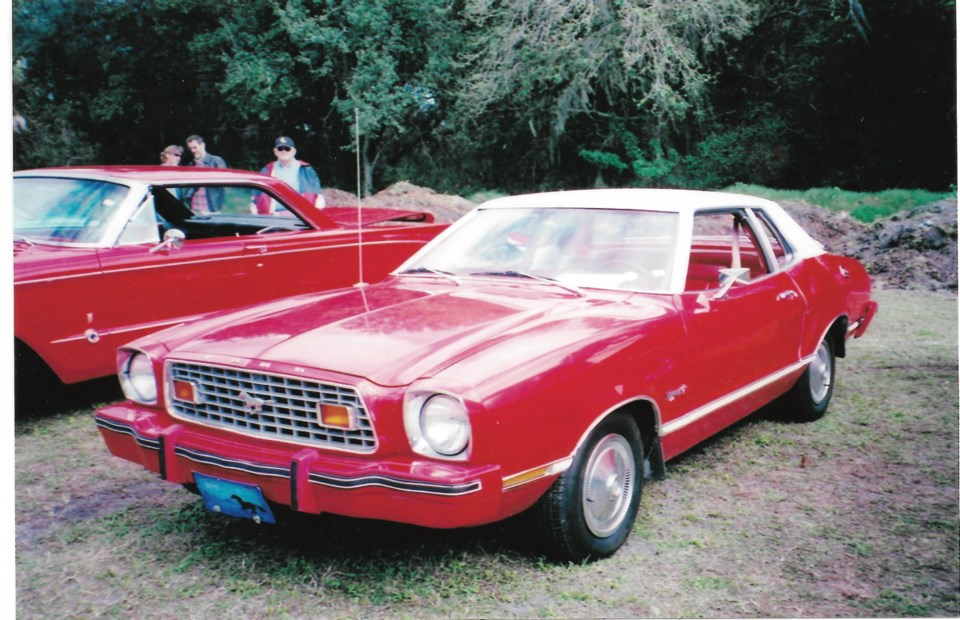Even though the original Ford Mustang introduced in mid-1964 was based on modest Ford Falcon components, it was an instant sensation. The attractive four-passenger two-door sportster set a first model year sales record of 680,989, admittedly a long one that ran from April ’64 to August ’65. It caught the competition so off guard it took rival Chevrolet until the 1967 model year to respond with its Camaro.
The Mustang made Ford’s general manager Lee Iacocca a household name and put his picture on the cover of both Time and Newsweek. It also spawned a class of vehicle known as the Pony Car.
As inevitably seems to happen, the Mustang grew bigger and heavier. By 1973 it was about 305 millimetres longer, 152 mm wider and about 272 kilograms heavier than the original.
The Mustang had outgrown its original appeal as an affordable, nimble sporty car. As Iacocca summed up: “The Mustang market never left us, we left it.”
Sales confirmed this, sliding from more than 600,000 in model year 1966, to just 134,267 in 1973. What’s more, new, lighter, imported 2+2 mini-Pony Cars combining four-on-the-floor fun with upscale luxury were becoming increasingly popular. They were filling the segment Mustang had created and gradually abandoned.
Cars such as the Toyota Celica and Ford’s own German Capri (sold by Lincoln-Mercury dealers, and ironically inspired by the original Mustang), were the stimulus for a new, smaller Mustang to try recapturing the earlier magic.
Plans for the trimmer 1974 Mustang began in 1970, and just as the original was based on mundane Falcon components, the new one used the new-for-1971 subcompact Ford Pinto as its foundation. This complete departure was called the Mustang II.
Iacocca specified a wheelbase of 2,438 to 2,540 mm in notchback and fastback coupes. This precluded using a long engine, so a 2.3-litre, overhead cam inline four was the base power with a 2.8- litre, overhead valve V-6 optional, and standard in the upscale Mustang II Mach I. The four was the U.S.-built Pinto engine while the option was a stretch of the Capri’s 2.6 litre V-6 from Germany.
Ford’s engineers took downsizing seriously and made the Mustang II even smaller than the original. The wheelbase was reduced from 2,743 mm to 2,443 mm and ove-all length from 4,613 mm to 4,445 mm. It was a full 508 mm shorter and 102 mm narrower than the bloated ’73 model it replaced.
In spite of its smaller size, mandated safety and emission equipment brought the unit construction Mustang II’s weighy to 1,270 kg, a little heavier than the original’s 1,179 kg.
The attractive styling was influenced by coachbuilder Ghia of Italy, recently acquired by Ford, and carried on the long-hood, short-deck theme of the original. It came as a notchback and hatch-equipped fastback.
The Mustang II was no match for the original’s performance. Road & Track (8/64) reported the original 4.7 litre (289 cu in.) V-8 Mustang sprinted to 97 km/h (60 mph) in 9.0 seconds and had a top speed of 177 (110).
The Mustang II Mach I with the 2.8 litre V-6 (R&T 9/73) ran zero to 97 (60) in 13.8 seconds with top speed of 161 (100). The four was, of course, even slower.
When Ford advertised the new 1974 Mustang as “The right car at the right time,” they couldn’t have known how prescient they would be. In November 1973, conditions changed dramatically when the Arab oil embargo precipitated the first of two 1970s “energy crises.”
Not only did gasoline prices spike but its supply was rumoured to be in jeopardy. Fuel economy immediately became the hot item and helped boost the smaller Mustang’s first calendar year sales to 385,993.
With oil crisis memories fading by 1975, Ford offered a 5.0-litre V-8 in the Mustang II, bringing performance closer to the original’s. R&T (1/75) recorded zero to 97 km/h (60 mph) in 10.5 seconds and top speed of 171 (106).
A Cobra II with options such as extra trim, black grille, front air dam and rear spoiler came in 1976. There was also a Stallion package with different paint treatment and stallion decals on the front fenders. For 1978 there was the even more garish King Cobra with standard 5.0-litre V-8, deeper air dam, stripes and a cobra decal on the hood.
The Mustang II was built through the 1978 model year, then replaced by the 1979 Fairmont-based, third-generation Mustang. Many Mustang enthusiasts disdained the Mustang II as a wimpy aberration, not a “real” Mustang. It was, however, a product of its time and became a desirable collectible for many.



